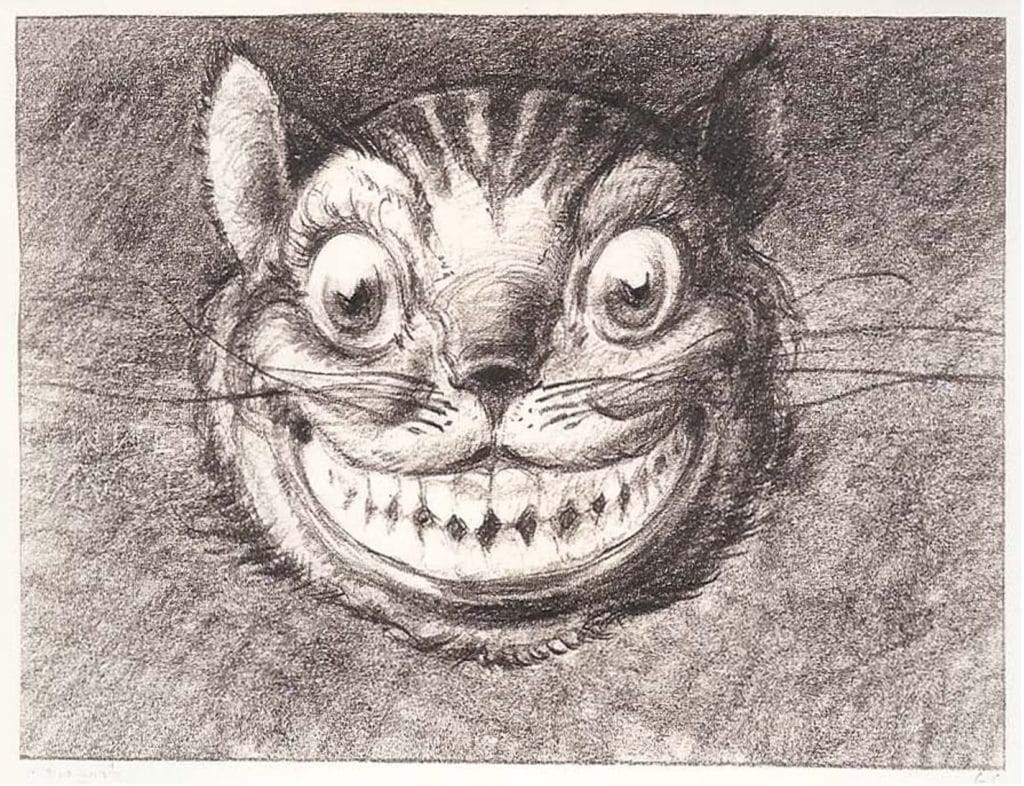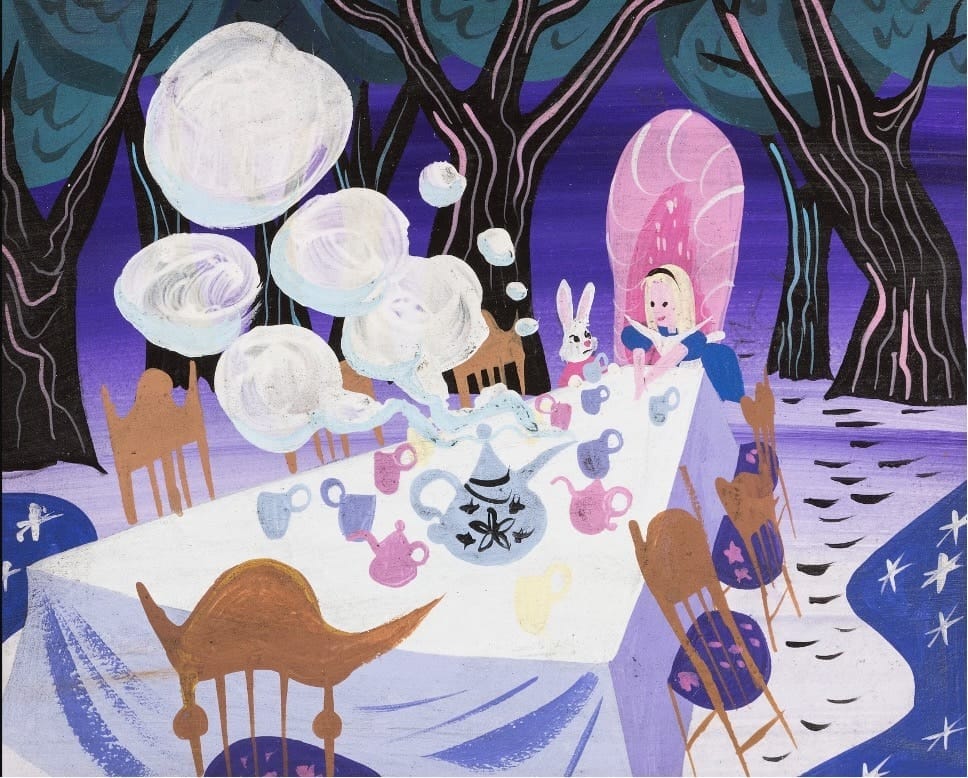With CEO mudslinging, sagging box office returns for Marvel, and looming board battles, it can be easy to forget the Walt Disney Company is, at its core, a dream factory. The House of Mouse has produced movies, TV shows, theme park rides, and games that have inspired and entertained, forming core memories for its legions of fans. This assembly line of amusement originally stemmed from the dreams of one man - Walt Disney. And what inspired Disney? Alice’s Adventures in Wonderland.
“No story in English literature has intrigued me more. It fascinated me the first time I read it as a schoolboy.” Disney was fascinated by Lewis Carroll’s fantasy tale as a child growing up in Missouri and it’s easy to see how the novel influenced his later work. Disney’s films told fantastical stories in magical lands, infused with comedy and whimsy. Micky, Snow White, Pinnochio, and Cinderella captured the world’s imagination, just like Alice, the White Rabbit, the Mad Hatter, and the rest of Wonderland’s denizens did in 1865. But Disney wasn’t just content being inspired by Alice’s Adventures in Wonderland, from his first forays into making movies, Disney was intent on bringing Alice to the big screen.
In 1923, Walt Disney was working at the wonderfully named Laugh-O-Gram Studios in Kansas City, Missouri. Laugh-O-Gram was not a runaway success, folding after two years and nine cartoons. But it was with Laugh-O-Gram that Disney made his first Alice film, a 12-minute silent short titled Alice’s Wonderland. The charming live-action/animation hybrid is loosely based on Lewis Carroll’s novel and follows Alice, a young girl who, after being inspired during a visit to an animation studio, dreams of traveling to an animated world filled with anthropomorphic animals. Alice is greeted at the train station and is the guest of honor in a parade around the animal realm. After escaping a pack of hungry lions, Alice leaps off a cliff and wakes up back in her bed, exhilarated by her fantastic dream.
Alice’s Wonderland didn’t save Laugh-O-Gram from bankruptcy but it did serve as the proof of concept for the Alice Comedies, a short series that chronicled the adventures of a live-action girl, Alice, and her animated cat Julius. Running from 1924 to 1927, the Alice Comedies were an important foundational piece for the nascent Walt Disney Corporation. It wasn’t until 1933 that the prospect of an Alice feature at Disney surfaced again, with the “Queen of the Movies” Mary Pickford in talks to face down the Red Queen as Alice. But the emergence of a competing live-action adaptation at Paramount scuppered the project and Disney contented himself with making Thru the Mirror, a short featuring the Mickey Mouse in a Through the Looking-glass parody.
The project that became the 1951 film Alice in Wonderland first started in the late 1930s after the tremendous success of a little film called Snow White. An initial story treatment was completed and Disney hired David Hall to create concept art for the feature. The results were…interesting. The art itself is beautiful, presaging the darker routes that future adaptations of Alice would take. But dark isn’t what Disney wanted for Alice. He was convinced that the film’s success would hinge on highlighting Carroll’s humor in the novel and ultimately rejected Hall’s work.



It was around this time that Disney’s enthusiasm for the project seemed to wane. “I don’t think there would be any harm in letting this thing sit for a while. Everyone is stale now,” he said. The prospect of Alice in Wonderlandgetting the Disneyland treatment became even more unlikely, with the underperformance of Pinnochio and Fantasia and the collapse of the foreign market due to World War II. Bank of America even prohibited the company from producing new feature films until they had fixed their finances.
Yet Disney didn’t give up. Come 1945, he was back in Wonderland, tapping famed Brave New World novelist Aldous Huxley to pen the screenplay for a live-action/animated hybrid production. While Disney found Huxley’s script too literal, he hadn’t lost his enthusiasm for the source material, telling American Weeklyin 1946, “Carroll was revolutionary in the field of literature. He violated the serious Victorian tradition by writing Alice in a vein of fantasy and nonsense. In fact, he was a pace-setter for the motion picture cartoon and the comic strip of today by the style he introduced in his fantasy.”


Disney decided to make the film fully animated and directed that the script focus more on the humor, joy, and whimsy of the novel. Mary Blair’s concept art introduced a modernist bent and her use of vivid colors and warped perspective captured the tone Disney desired. He also commissioned talented songwriters such as Sammy Fain and Bob Hilliard to compose music and songs for the film. The train was now truly on the tracks and Disney’s clarity of vision and eye for artistic talent came to the fore as Alice in Wonderland coalesced into a bright adventure with catchy songs and contagious comedy.
The production was massive by the standards of the time. The production of Alice in Wonderland took five years and the budget ran to $3 million (over $47 million in 2023), requiring Disney to ultimately utilize some of the profits from Cinderella to ensure the film reached his lofty standards. A full live-action feature was shot for reference during animation, a process that produced over 350,000 drawings and paintings by 750 artists. A 50-piece orchestra directed by Oliver Wallace (later nominated for an Oscar in recognition of his work) completed the score. And above it all, was the Missouri schoolboy who was finally about to turn his childhood dream into reality.


Alice’s road to becoming a revered classic, however, was to prove to be just as winding as her adventure in Wonderland. Reviews were not favorable upon the film’s release in 1951, with critics citing the divergence from the source material and a lack of heart and warmth. Audiences were similarly underwhelmed, resulting in a $600,000 shortfall at the box office. But, like Carroll’s book, Disney’s film proved to have considerable legs. Several re-releases encountered more receptive audiences, especially in the early 1970s when the studio connected the film to the recent prominence of psychedelia. Subsequent generations reevaluated Disney’s passion project and the film is now considered one of his company’s best. In the film, Alice remarks that “Curiosity often leads to trouble.” And while Walt Disney’s childhood curiosity regarding Alice’s Adventures in Wonderland did result in some stressful times, it also led to an indisputable animated classic.


An itinerant storyteller, John Drain attended the University of Edinburgh before studying film at DePaul University in Chicago and later earned an MFA in Screenwriting from the American Film Institute Conservatory. John focuses on writing mysteries and thrillers featuring characters who are thrown into the deep end of the pool and struggle to just keep their heads above water. His work has been recognized by the Academy Nicholls Fellowship, the Austin Film Festival, ScreenCraft, Cinestory, and the Montreal Independent Film Festival. In a previous life, John created and produced theme park attractions across the globe for a wide variety of audiences. John keeps busy in his spare time with three Dungeons and Dragons campaigns and a seemingly never-ending stack of medieval history books.